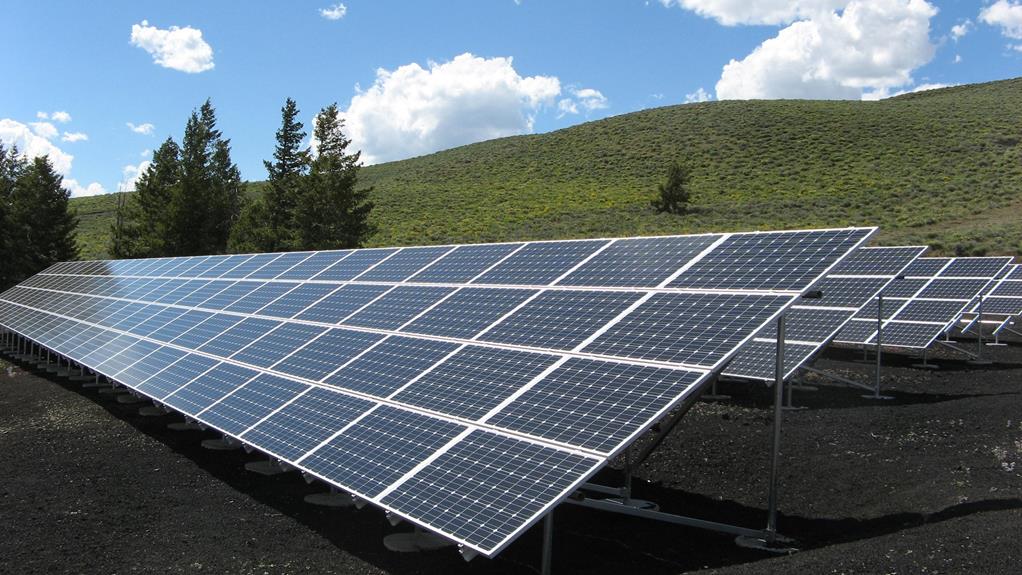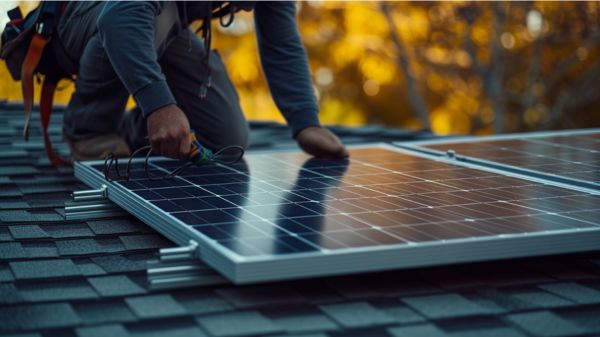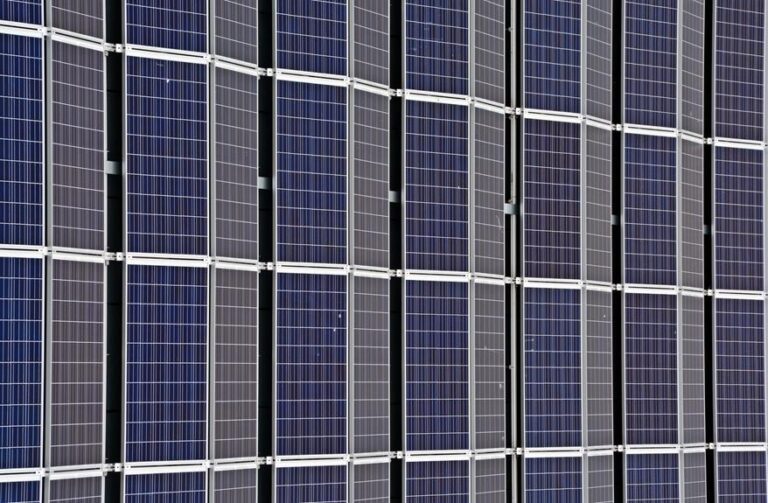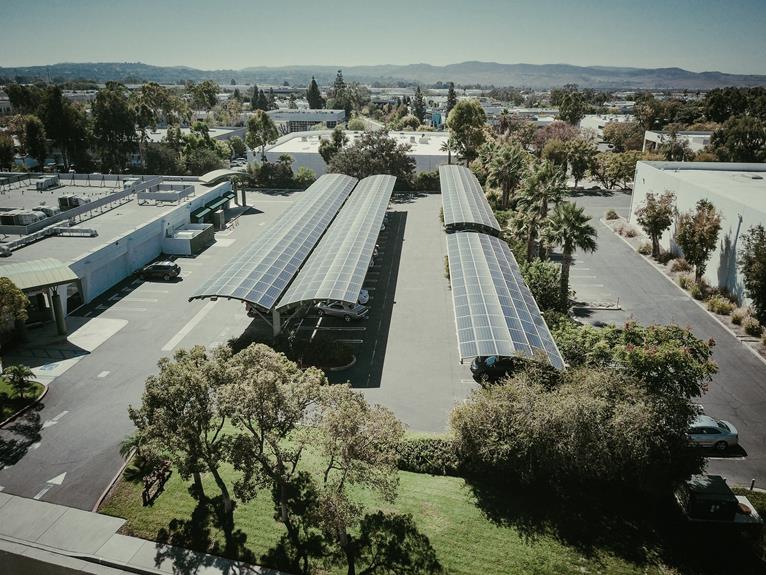7 Tips for Stable Solar Power Grid Integration
Are you struggling to integrate solar power into the grid without sacrificing stability? Look no further. This article presents seven invaluable tips to ensure a stable solar power grid integration. From maintaining power quality to regulating voltage and controlling frequency, these tips will help you achieve seamless integration.
With anti-islanding protection, fault detection, and recovery measures, you can rest assured knowing your solar power system is secure and reliable.
Say goodbye to grid instability and join the ranks of successful solar power integrators.
Key Takeaways
- Prioritize balancing supply and demand to ensure grid stability and reliable power delivery.
- Use inverters with high compatibility to effectively handle voltage fluctuations and maintain stable power quality.
- Implement power factor correction to minimize the effects of harmonic distortion and improve grid stability.
- Utilize smart grid technologies, microgrid integration, and energy storage systems to optimize load balancing and maintain stability during renewable energy integration.
Grid Stability
To ensure grid stability when integrating solar power, you must prioritize the balancing of supply and demand. Grid resilience and reliability are crucial aspects of a stable solar power grid.
Grid resilience refers to the ability of the grid to withstand and recover from disruptions, such as extreme weather events or equipment failures. It requires robust infrastructure and contingency plans to minimize downtime and ensure continuous power supply.
Grid reliability, on the other hand, focuses on the consistent delivery of electricity to meet the demands of consumers. This requires effective monitoring and control systems to manage fluctuations in solar power generation and ensure that supply matches demand at all times.
Power Quality
To ensure stable solar power grid integration, you need to address power quality issues such as voltage fluctuations, inverter compatibility, and harmonic distortion.
Voltage fluctuations can disrupt the operation of the solar power system and affect the grid stability.
It’s important to choose inverters that are compatible with the grid requirements to avoid any issues during the integration process.
Harmonic distortion needs to be minimized to maintain the quality of power supplied to the grid.
Voltage Fluctuations Inverter Compatibility
Ensure stable solar power grid integration by ensuring compatibility between voltage fluctuations and inverters for optimal power quality. Voltage fluctuations can occur due to various factors such as load changes, grid management issues, or sudden changes in weather conditions. It is crucial to have inverters that are compatible with these fluctuations to maintain a consistent power supply and prevent any damage to the system.
To understand the compatibility between voltage fluctuations and inverters, let’s take a look at the following table:
| Voltage Fluctuation Level | Inverter Compatibility |
|---|---|
| Low | High |
| Moderate | Medium |
| High | Low |
| Very high | Not recommended |
| Extreme | Not recommended |
Inverters with high compatibility can handle low to moderate voltage fluctuations effectively, ensuring stable power quality. However, if the voltage fluctuations are too high or extreme, it is advisable not to use the inverter as it may lead to power quality issues and potential damage to the system.
Harmonic Distortion Grid Stability
Now let’s explore the impact of harmonic distortion on grid stability and power quality.
Harmonic distortion refers to the presence of unwanted frequencies in the electrical system, which can disrupt the normal operation of the grid. These unwanted frequencies, known as grid harmonics, are typically caused by non-linear loads such as solar inverters.
When these harmonics are present in the grid, they can lead to voltage fluctuations, overheating of equipment, and increased power losses.
To maintain grid stability and ensure optimal power quality, it’s important to implement power factor correction techniques. Power factor correction helps to minimize the effects of harmonic distortion by improving the power factor of the system and reducing the reactive power.
Load Balancing
When it comes to load balancing in the context of solar power grid integration, the focus is on maintaining grid stability. Load balancing ensures that the electricity supply matches the demand, preventing overloading or underutilization of the grid.
The integration of renewable energy sources, such as solar power, adds complexity to load balancing but also offers opportunities for smarter grid technologies to optimize energy distribution and enhance overall system efficiency.
Grid Stability During Load Balancing
To maintain grid stability during load balancing, it is crucial to carefully manage the distribution of solar power. Load balancing involves adjusting the power output of solar panels to match the demand on the grid. This process can create fluctuations in the grid, which can lead to instability if not properly managed.
One way to address this issue is through microgrid integration, where smaller local grids are connected to the main grid. This allows for better control and distribution of solar power, reducing the impact of load balancing on the overall stability of the grid.
Another solution is the use of energy storage systems, such as batteries, which can store excess solar power during periods of low demand and release it during peak demand, helping to maintain grid stability.
| Advantages of Microgrid Integration | Benefits of Energy Storage Solutions |
|---|---|
| Improved grid stability | Smoothens solar power fluctuations |
| Enhanced reliability | Reduces the need for backup power |
| Enables localized power generation | Provides flexibility in load balancing |
| Increases renewable energy penetration | Enhances grid resilience and efficiency |
Renewable Energy Integration
To maintain grid stability during load balancing, you should continue managing the distribution of solar power while integrating renewable energy.
Here are some key considerations for effectively integrating renewable energy into the power grid:
- Solar Panel Efficiency: Ensuring that your solar panels are operating at their maximum efficiency is crucial. Regular maintenance and monitoring can help identify any issues that may impact their performance.
- Energy Storage Solutions: Implementing energy storage systems can help mitigate the intermittent nature of renewable energy sources like solar power. These solutions allow excess energy to be stored and used when the demand is high, ensuring a more stable supply.
- Smart Grid Technologies: Utilizing advanced grid management technologies can help optimize the integration of renewable energy sources. These technologies enable real-time monitoring and control of the power grid, allowing for efficient load balancing.
- Demand Response Programs: Encouraging consumers to participate in demand response programs can help balance the supply and demand of electricity. By incentivizing customers to adjust their energy usage during peak times, the grid can be better managed, reducing the need for additional power generation.
Smart Grid Technology Benefits
As you continue to integrate renewable energy into the power grid, it is essential to leverage the benefits of smart grid technology for load balancing. Smart grid communication and demand response play a crucial role in achieving a stable and reliable power grid.
Smart grid technology allows for real-time monitoring and control of electricity distribution, enabling efficient load balancing. By analyzing data from various sources, such as smart meters and sensors, the smart grid can optimize the distribution of electricity to meet demand.
A key feature of smart grid technology is demand response, which allows consumers to adjust their electricity usage in response to grid conditions. During times of high demand or low supply, the smart grid can send signals to consumers, encouraging them to reduce their electricity consumption. This helps to balance the load on the grid and prevent power outages.
In summary, smart grid technology, with its advanced communication capabilities and demand response functionality, is vital for load balancing in the integration of renewable energy into the power grid.
| Smart Grid Technology Benefits |
|---|
| Real-time monitoring and control |
| Optimization of electricity distribution |
| Demand response for load balancing |
Voltage Regulation
You can effectively regulate voltage in the solar power grid by regularly monitoring and adjusting the settings. Voltage control is crucial for maintaining stability and reliability in the grid, especially as the penetration of solar power increases. Here are some key strategies for voltage regulation:
- Utilize advanced monitoring systems: Install voltage sensors and communication devices to continuously monitor the voltage levels at different points in the grid.
- Employ reactive power management techniques: By controlling the reactive power flow, you can regulate voltage within acceptable limits. This can be achieved through the use of capacitors, voltage regulators, and static VAR compensators.
- Implement voltage control algorithms: Develop control algorithms that can dynamically adjust the voltage setpoints based on real-time measurements and system conditions.
- Coordinate with other grid control functions: Ensure that voltage control is integrated with other grid control functions like frequency regulation and power flow management to achieve optimal system performance.
Frequency Control
Maintain stable operation of the solar power grid by actively controlling the frequency.
Frequency control is crucial for the reliable integration of solar power into the grid. As the demand for electricity fluctuates throughout the day, it’s essential to maintain a consistent frequency to ensure the stability of the grid.
One method of frequency control is through demand response, which involves adjusting electricity consumption in response to changes in frequency. By implementing demand response programs, consumers can help regulate the frequency by reducing or increasing their energy usage when needed.
Another effective method is the use of energy storage systems. Energy storage allows excess energy to be stored during times of high solar generation and released during periods of low generation, helping to balance the frequency and ensure grid stability.
Anti-islanding Protection
To ensure the stability of the solar power grid, it’s essential to implement effective anti-islanding protection. Microgrid implementation and islanding prevention play a crucial role in maintaining a safe and reliable solar power system. Here are some key points to consider:
- Active Frequency Drift Detection: This technique monitors the frequency of the grid and compares it to the solar power system’s frequency. If a significant deviation is detected, it triggers the anti-islanding protection to disconnect the solar system.
- Voltage Monitoring: Continuous monitoring of grid voltage is necessary to detect any abnormal fluctuations. If the voltage exceeds or falls below the predefined threshold, the anti-islanding protection system isolates the solar system from the grid.
- Rate of Change of Frequency (ROCOF): By measuring the rate at which the frequency changes, the anti-islanding protection can detect islanding events. If the ROCOF exceeds the predefined limits, the solar system is disconnected.
- Active Power Monitoring: Monitoring the active power flow between the solar system and the grid helps detect any imbalances. If a significant discrepancy is detected, the anti-islanding protection disconnects the solar system.
Implementing robust anti-islanding protection mechanisms is vital to ensure the stability and reliability of solar power grid integration.
Fault Detection and Recovery
One key aspect for stable solar power grid integration is ensuring effective fault detection and recovery through the use of advanced monitoring systems.
Grid monitoring plays a vital role in identifying faults and abnormalities in the solar power grid. By continuously monitoring the grid, potential issues can be detected early on, allowing for prompt action to be taken.
Predictive maintenance techniques can be employed to anticipate and prevent faults before they occur, improving the overall reliability of the grid. Advanced monitoring systems enable real-time data collection, analysis, and reporting, providing valuable insights into the health and performance of the solar power grid.
These systems can automatically detect faults, such as voltage fluctuations or abnormal power output, and trigger recovery mechanisms to restore the grid to a stable state.
Effective fault detection and recovery are essential for maintaining a reliable and resilient solar power grid.
Conclusion
Congratulations! You have now mastered the key tips for ensuring stable integration of solar power into the grid.
By implementing measures such as power quality control, load balancing, and fault detection, you can make the grid more resilient and efficient. Remember, a well-integrated solar power system is the key to a brighter and greener future.
So, go ahead and embrace these techniques, and watch your energy grid shine like a thousand suns!






